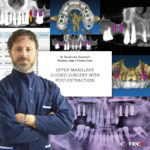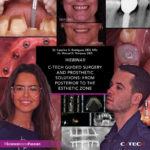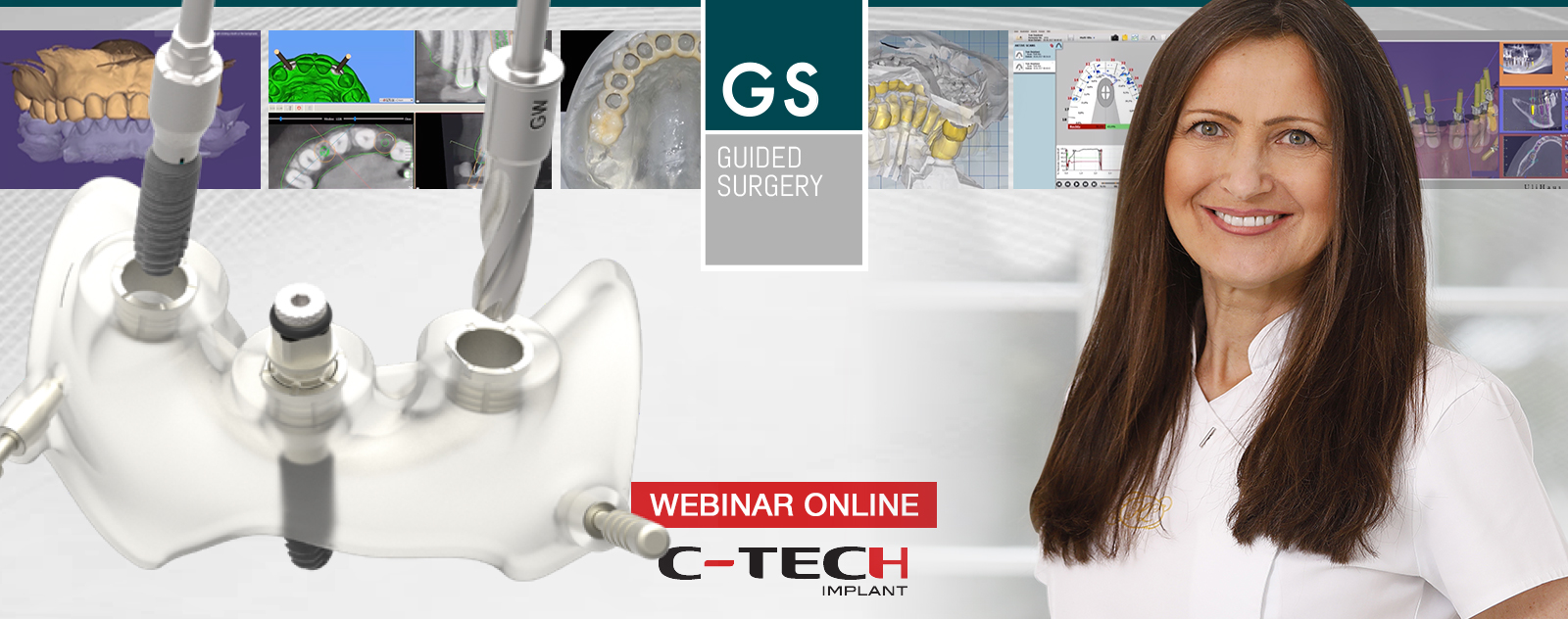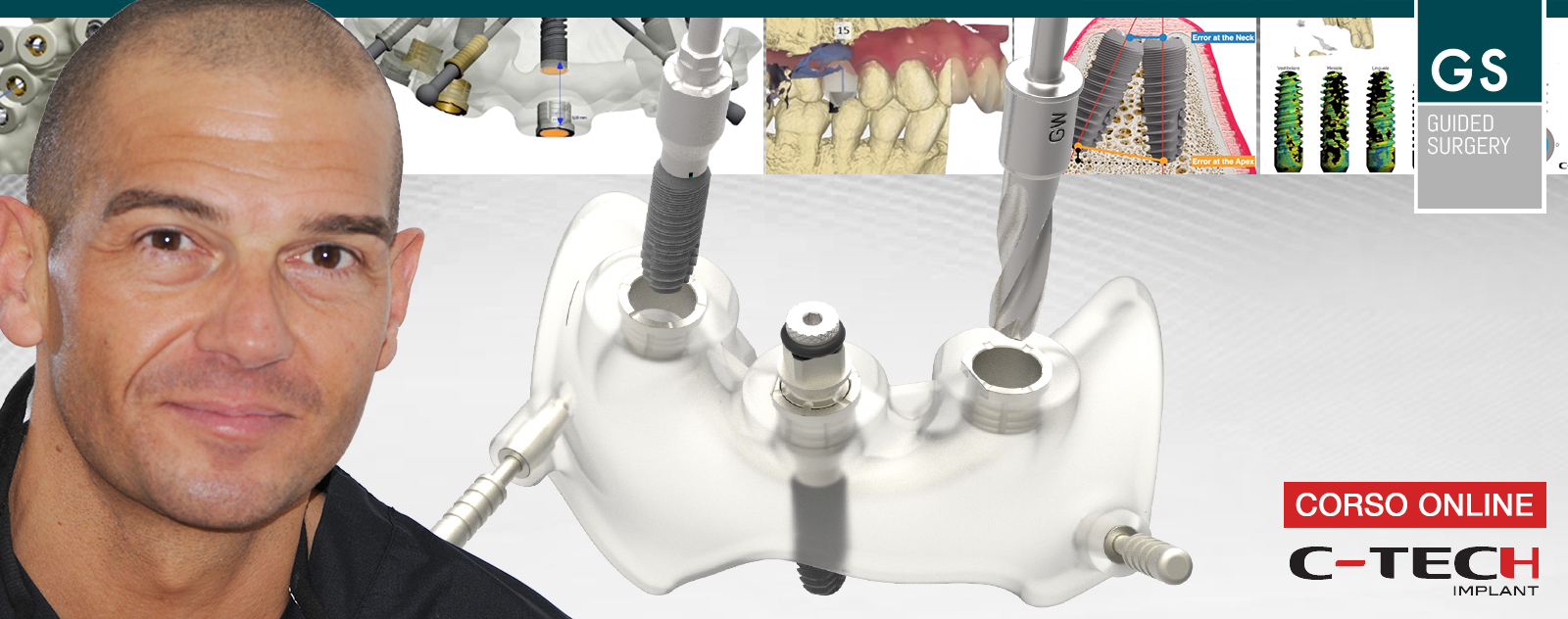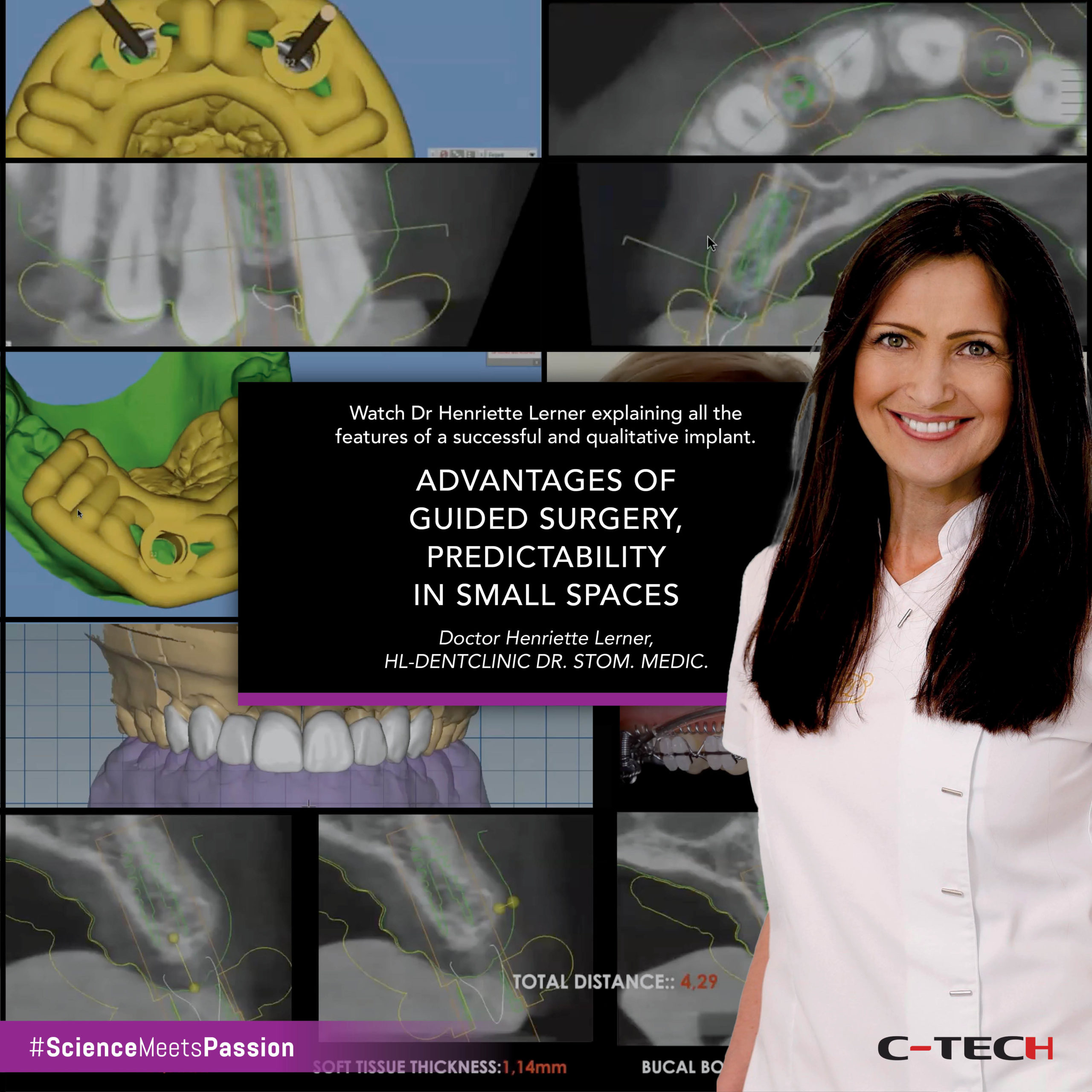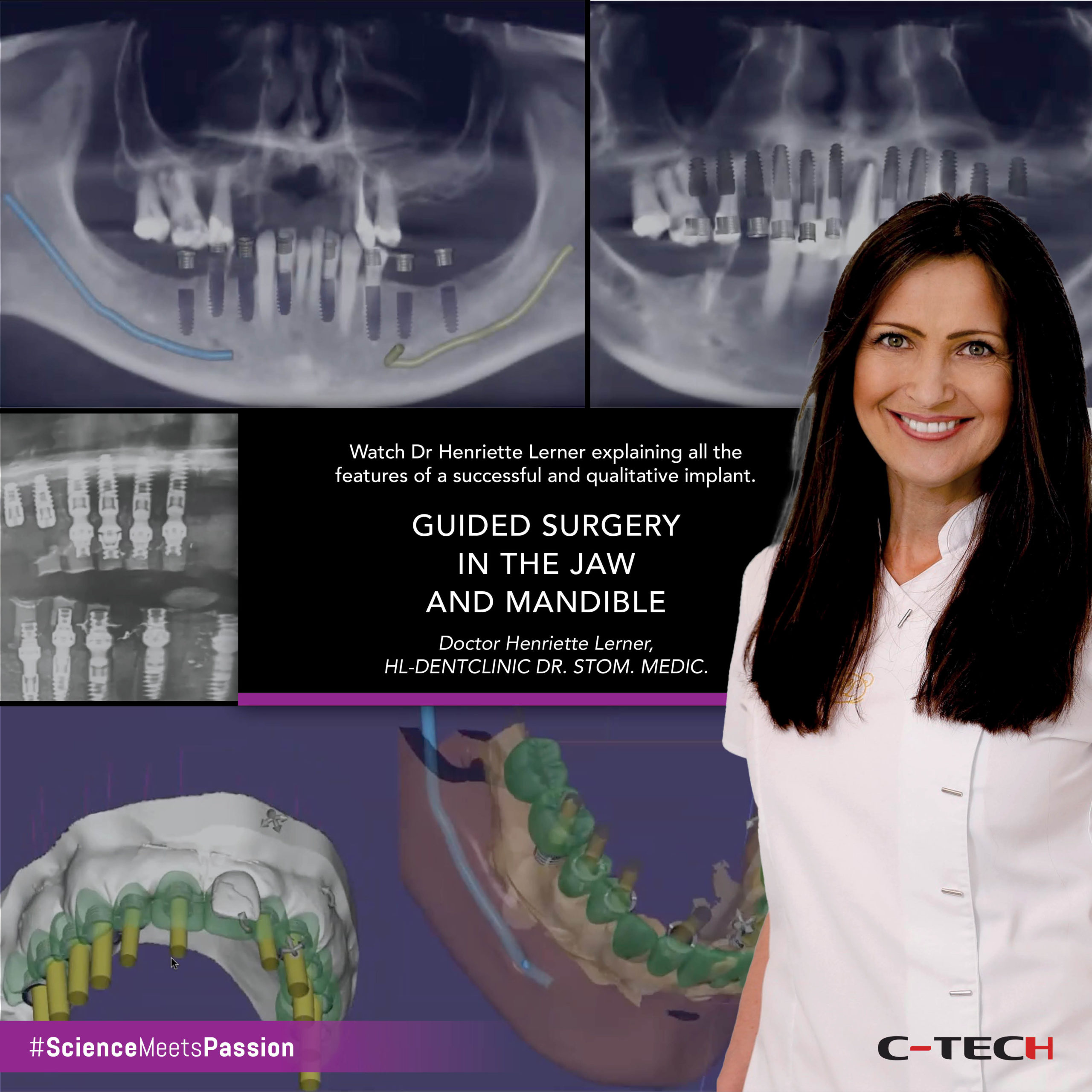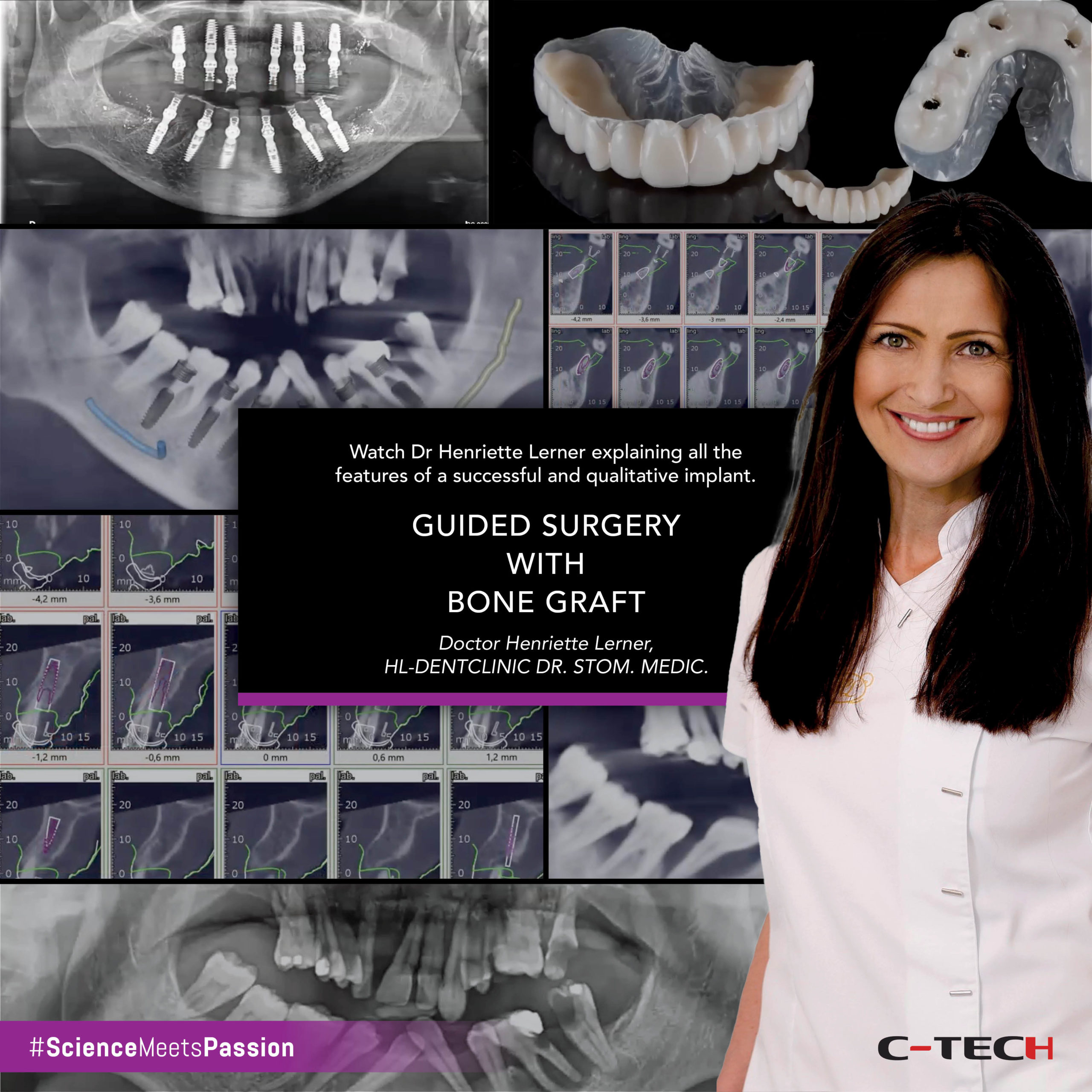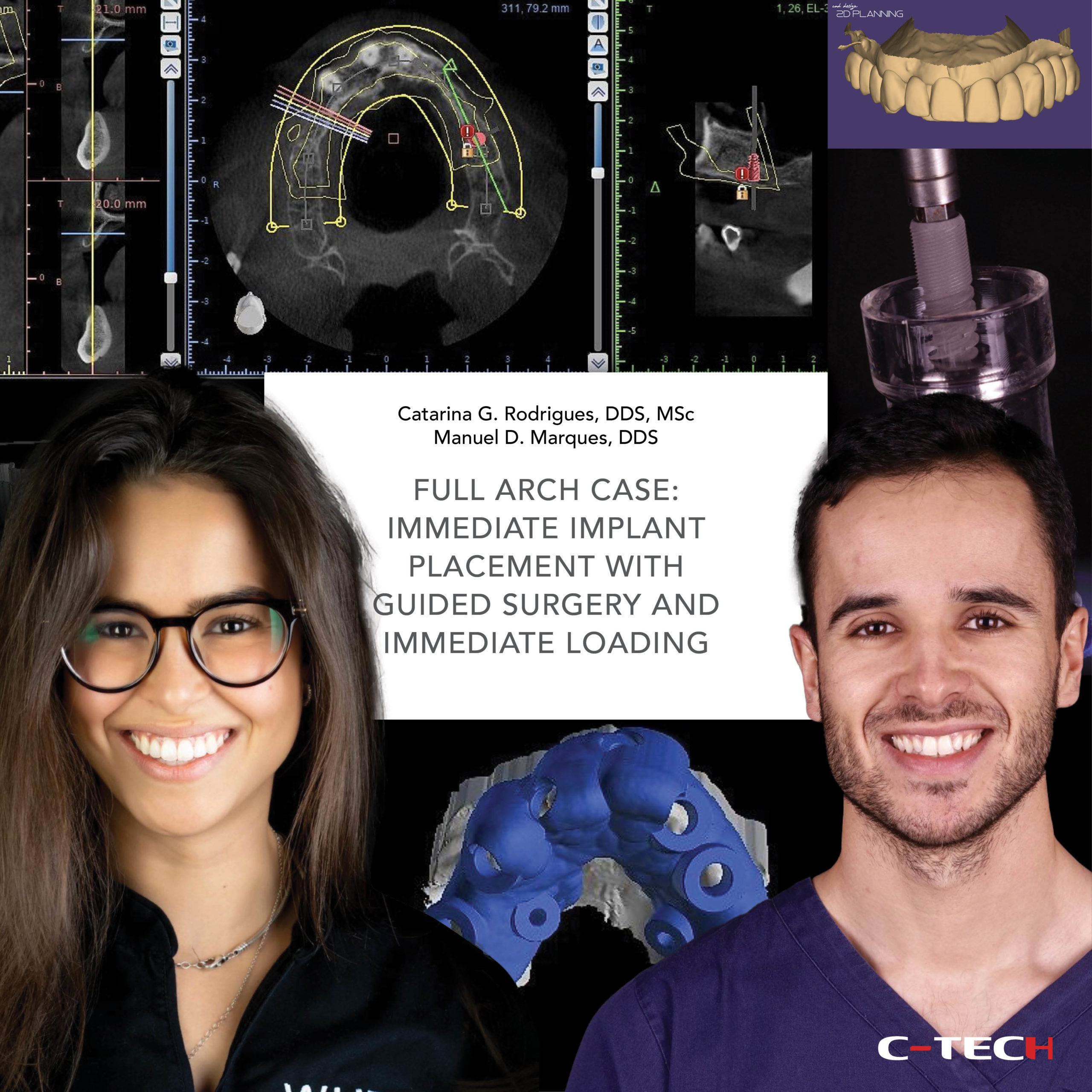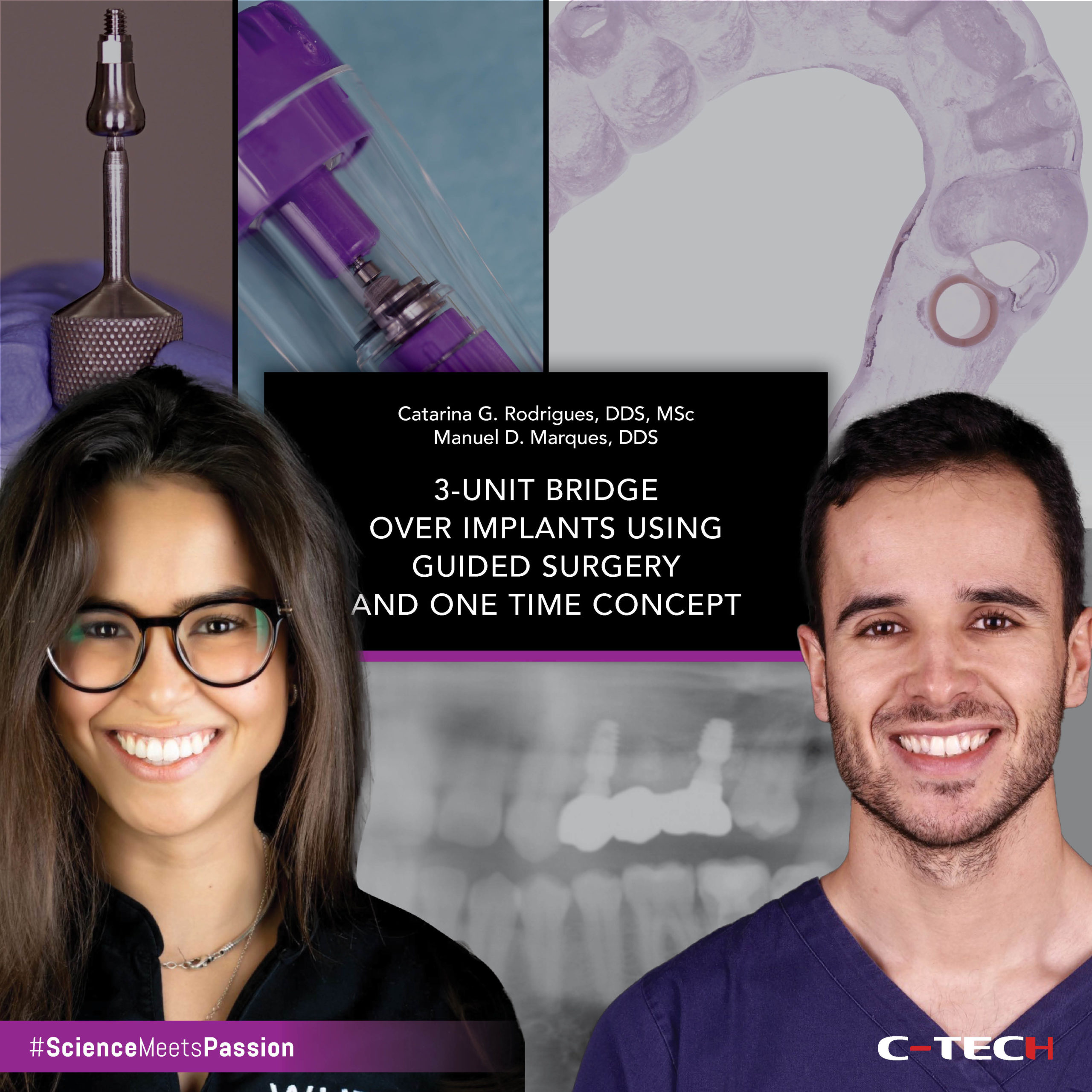GS – Guided Surgery
Webinar | C-Tech Guided Surgery and Prosthetic Solutions: from Posterior to the Esthetic Zone
Guided Mini Implant surgery – clinical case

Dr. Aldo De Blasi, Italy
Conventional mini implant surgery in the edentulous mandible is in most cases, a very quick and minimal invasive procedure. The implants are usually placed trans gingivally and if initial primary stability is achieved then they can be loaded immediately following the surgery.
Insertion of two EL implants on the upper jaw in guided surgery with immediate loading

Dr. Luigi Ciacci, Odt. Andrea Sessa
Introduction:
Modern dentistry depends on comprehensive diagnostics and careful planning to achieve the desired result and meet the expectations of both the patient and the dentist.
Digital planning and guided surgery based on three-dimensional X-ray data and digitized intraoral recording are of great help. They provide valuable information and allow for accurate backward planning to optimize the implant-prosthetic outcome, making the restoration more predictable in terms of function, aesthetics and biology.
Guided Implant on a Tricky Crest – clinical case

Dott. Alexandre Minis, France
Patient is a 56 years old male without a previous medical history. Tooth # 36 has been missing for several year.
Despite a satisfactory bone height on the panoramic, the CBCT reveals a thin bone at the level of the crest which does not allow the available height to be exploited.
In order to obtain an ideal prosthetic axis and to use the available bone to the maximum, the surgery is performed using a surgical guide, design on 3Shape Implant Studio, a classic dentition supported guide, 3D printed on a Phrozen Shuffle printer.
Guided Implant Placement with Buccal Exposure and Graft – clinical case

Dott. Alexandre Minis, France
Case description:
The 55 years old female patient has a lack of prior medical history and is a non-smoker.
There is a fracture under the crown of #12 with infection and vestibular fistula for which a temporary extraction with a valplast for 3 months is performed.
On the control CBCT, low bone volume and evidence of a radiolucent vestibular image initially suggesting fenestration linked to the fistula present before the extraction, or, of the bone being formed.
Surgical dental history:
The surgery is performed using a surgical guide, designed on 3Shape Implant Studio, dentition supported guide 3D printed on a Phrozen Shuffle printer.
Mini Implant Guided Surgery, Full edentulous mandible prosthesis stabilized transgingivally in under an hour – clinical case
Doctor Luigi Ciacci | COVID-19 GuideLines | Guided Surgery
患有骨软化症患者的完全修复
Webinar | Contemporary Digital Implant Dentistry with C-Tech Implant | C-GUIDE
Guided Surgery Webinar | Digital implant planning: workflow and suggestions for the best results in guided surgery
Extraction of endodontically failed pre-molar and immediate placement of a C-Tech Esthetic Line implant utilising a Guided Surgery Technique – a Case Report
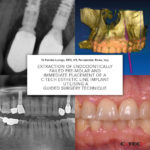
Dr Fabrizia Luongo, DDS, MS, Periodontist, Rome, Italy
Introduction
The use of Cone Beam Computerised Tomography (CBCT) scanning is becoming more commonplace in today’s implant dentistry. These scans combined with increasingly sophisticated software technology has led to greater accuracy in digital planning and guided surgery and is gradually being adopted across general practice. Furthermore, the restorative planning can be digitised and combined with the CBCT data in appropriate planning software.
In conjunction with these technology advances, dental implant design has evolved to incorporate the latest concepts of biomechanical design, which include sophisticated thread profiling, platform switching and a Morse locking taper on the implant/abutment interface.
The following case details brings these advances in implants and digital technologies together.
Placing a C-Tech Esthetic Line Implant Utilising a Navigated Surgery Approach – A Case Report
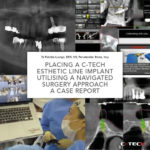
Dr Fabrizia Luongo, DDS, MS, Periodontist, Rome, Italy
Introduction
There has been a considerable evolution in implant dentistry over recent years that has seen the design of dental implants adopt sophisticated thread profiles which leads to a better primary stability. Simultaneously these new geometries aid cortical bone maintenance through to platform-switching capabilities again designed to minimise bone loss. When combined with improved implant-prosthetic connections such as a Morse-locking conical connection it contributes to a good long-term prognosis and an aesthetic outcome.
Concurrent with this evolution in implant design have been substantial advances in digital technologies across the field of dentistry. These digital advances include Cone-beam CT scanning combined with appropriate 3D planning software, navigated surgery technology, 3D intra-oral scanning to create a ‘virtual impression’ and 3D printing technologies. These digital technologies can minimise the number of appointments found in a conventional treatment protocol as well as enabling greater accuracy and will be considered in this case study.


